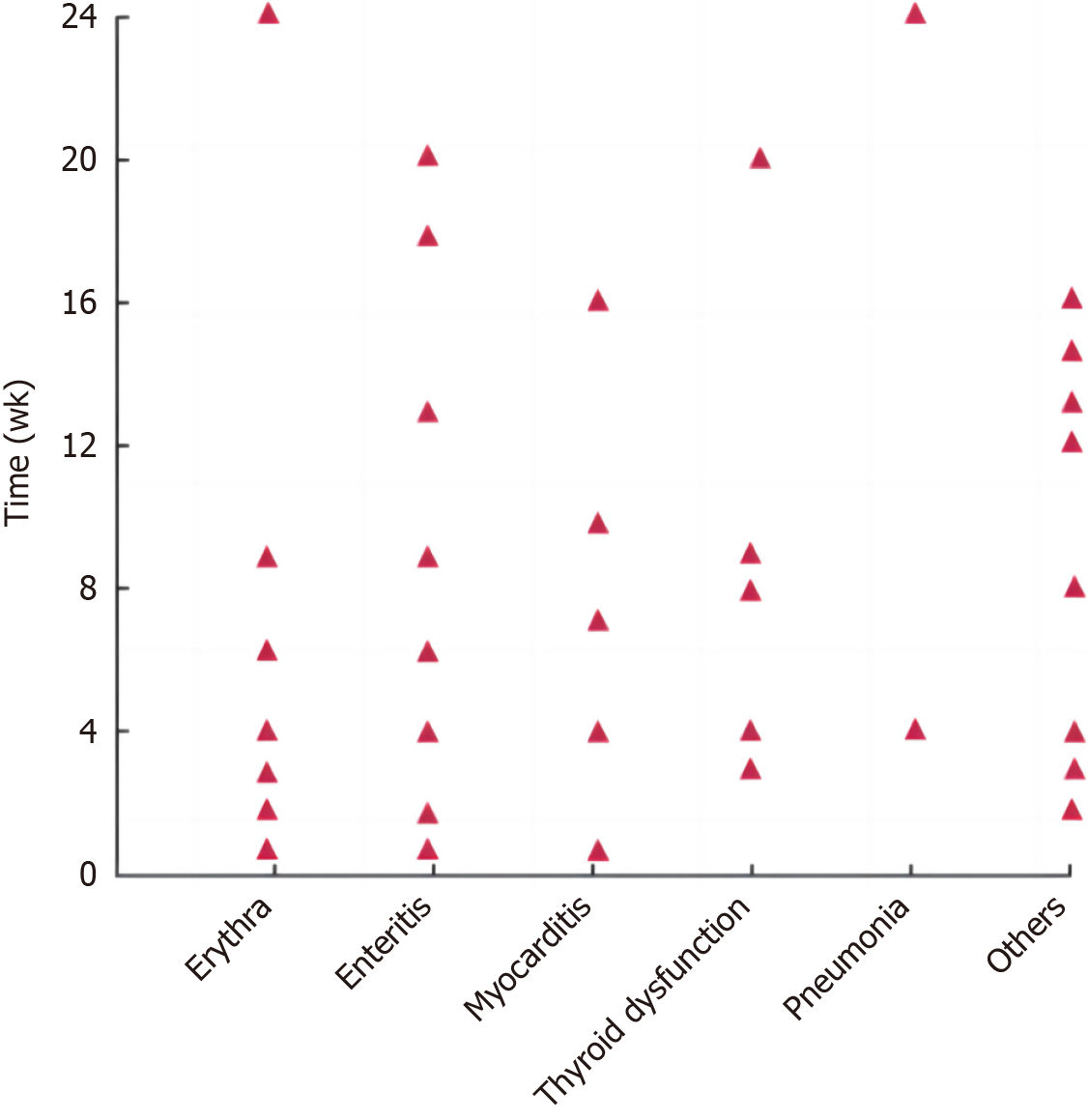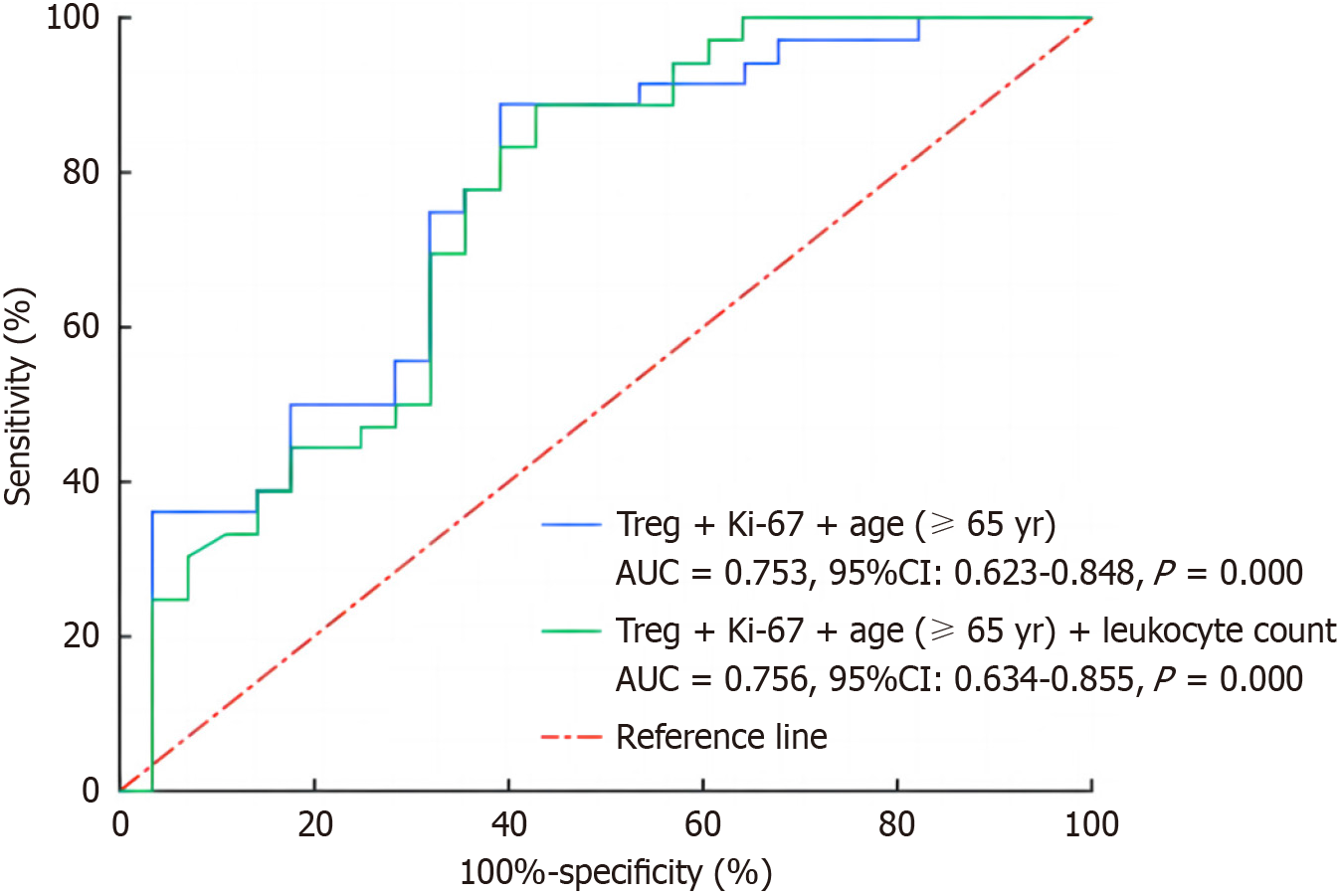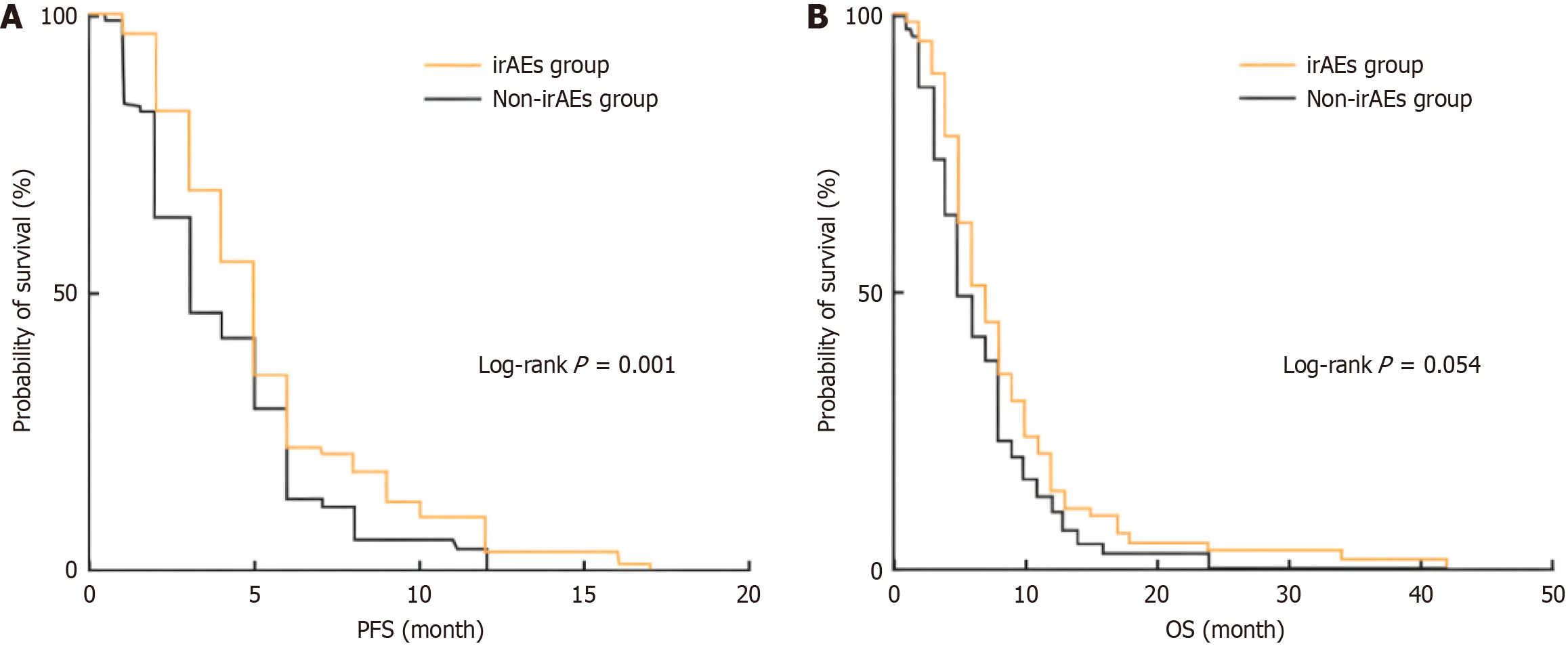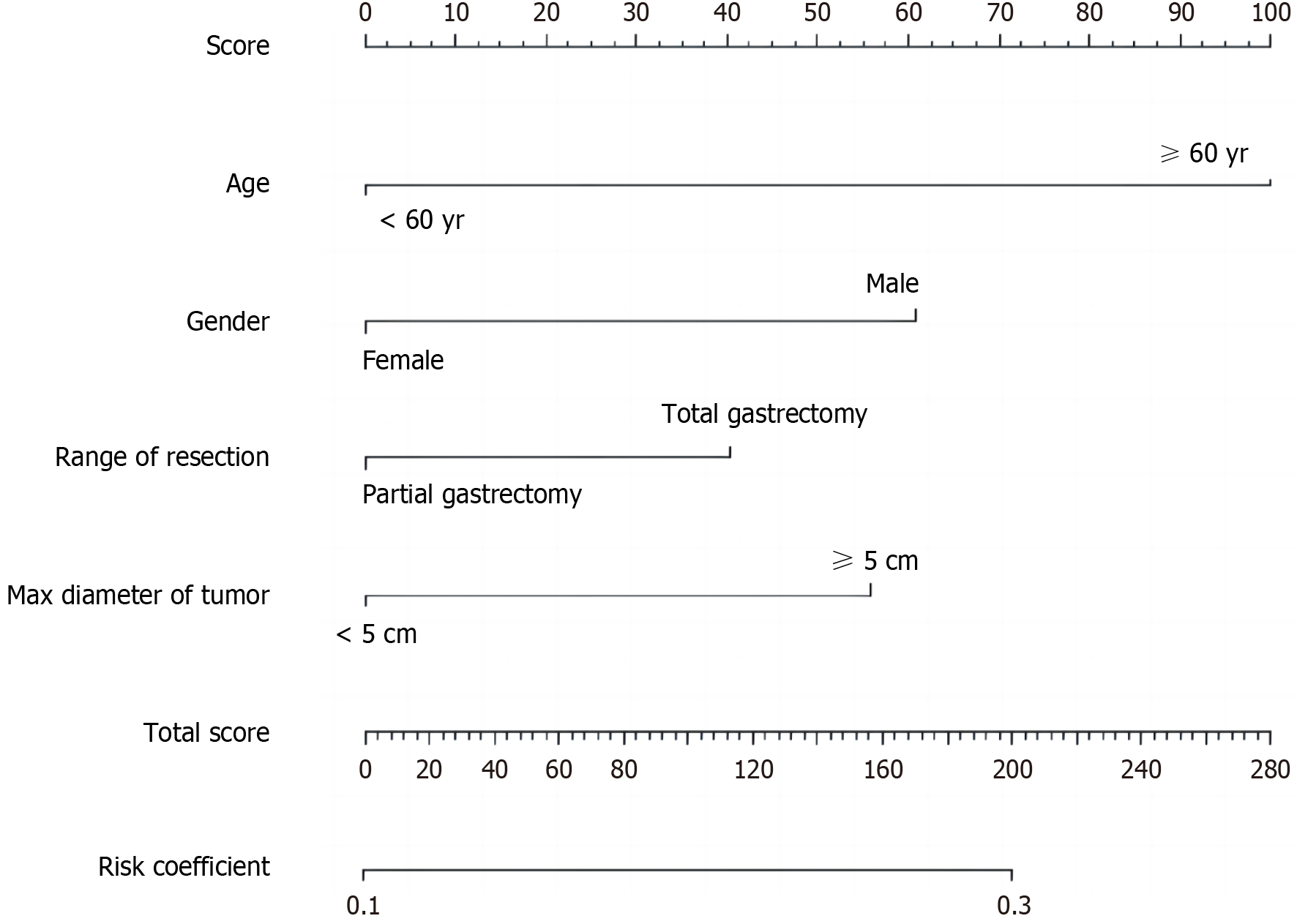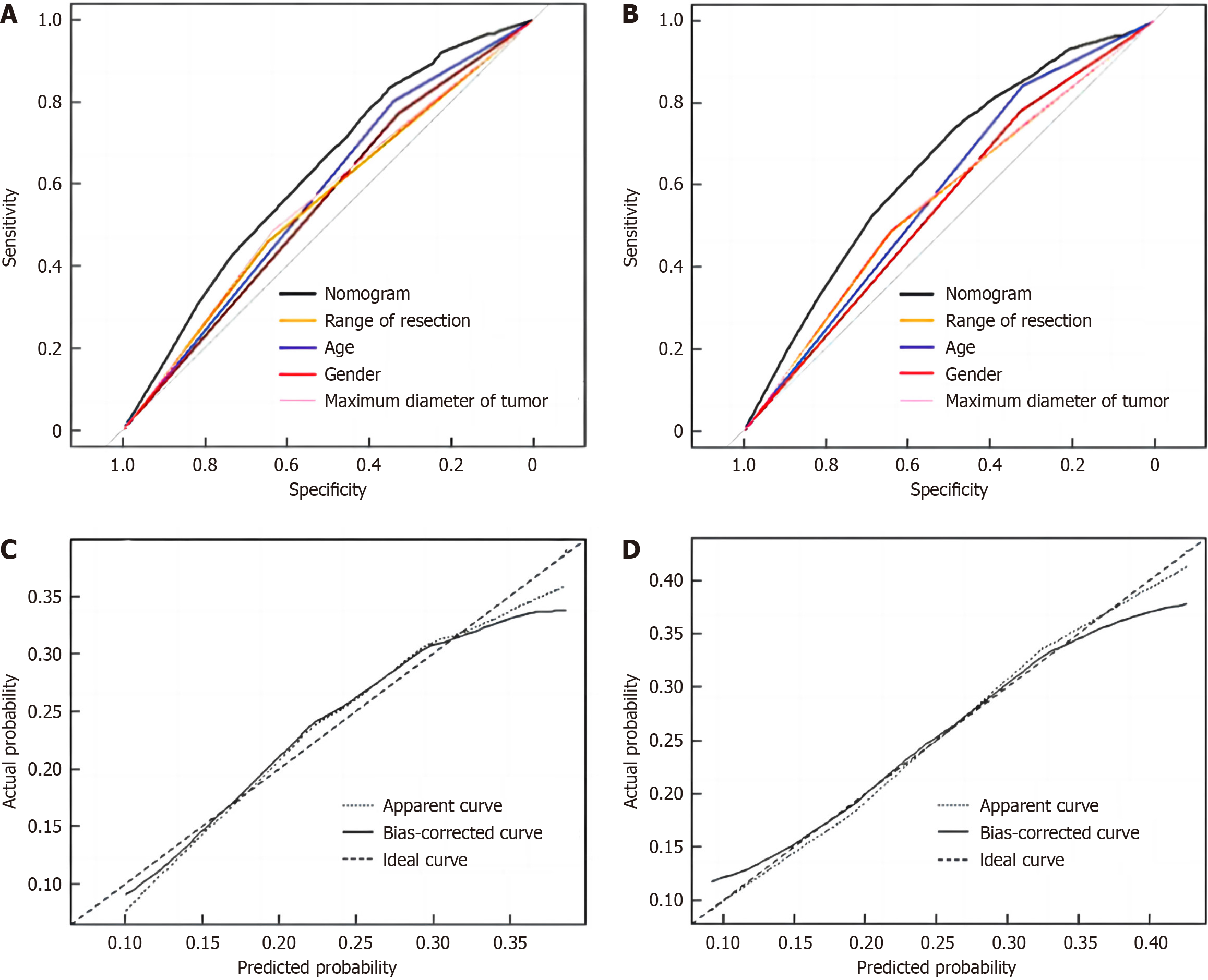Copyright
©The Author(s) 2024.
World J Gastrointest Oncol. Apr 15, 2024; 16(4): 1268-1280
Published online Apr 15, 2024. doi: 10.4251/wjgo.v16.i4.1268
Published online Apr 15, 2024. doi: 10.4251/wjgo.v16.i4.1268
Figure 1 Occurrence onset of different immune-related adverse reactions.
Figure 2 Receiver operating characteristic curve for predicting immune-related adverse reactions with two combined indices.
Treg: Regulatory T cells; AUC: Area under the curve; CI: Confidence interval.
Figure 3 Kaplan-Meier analysis of progression-free survival and overall survival of patients in the two groups.
A: Progression-free survival; B: Overall survival. PFS: Progression-free survival; OS: Overall survival; irAEs: Immune-related adverse reactions.
Figure 4 Nomogram predicting postoperative complications (≥ grade II) after radical resection of gastric cancer.
Figure 5 Receiver operating characteristic curve and calibration curve for predicting postoperative complications after radical resection of gastric cancer in the training set and validation set.
A: Receiver operating characteristic (ROC) curve of nomogram in the training set [nomogram, area under the curve (AUC) = 0.625; male, AUC = 0.550; age ≥ 60 years, AUC = 0.572; maximum diameter of tumor ≥ 5 cm, AUC = 0.560; total gastrectomy, AUC = 0.553); B: ROC curve of nomogram in the validation set (nomogram, AUC = 0.646; male, AUC = 0.552; age ≥ 60 years, AUC = 0.528; maximum diameter of tumor ≥ 5 cm, AUC = 0.566; total gastrectomy, AUC = 0.564); C: Calibration curve in the training set; D: Calibration curve in the validation set.
- Citation: He XX, Du B, Wu T, Shen H. Prognostic analysis of related factors of adverse reactions to immunotherapy in advanced gastric cancer and establishment of a nomogram model. World J Gastrointest Oncol 2024; 16(4): 1268-1280
- URL: https://www.wjgnet.com/1948-5204/full/v16/i4/1268.htm
- DOI: https://dx.doi.org/10.4251/wjgo.v16.i4.1268









